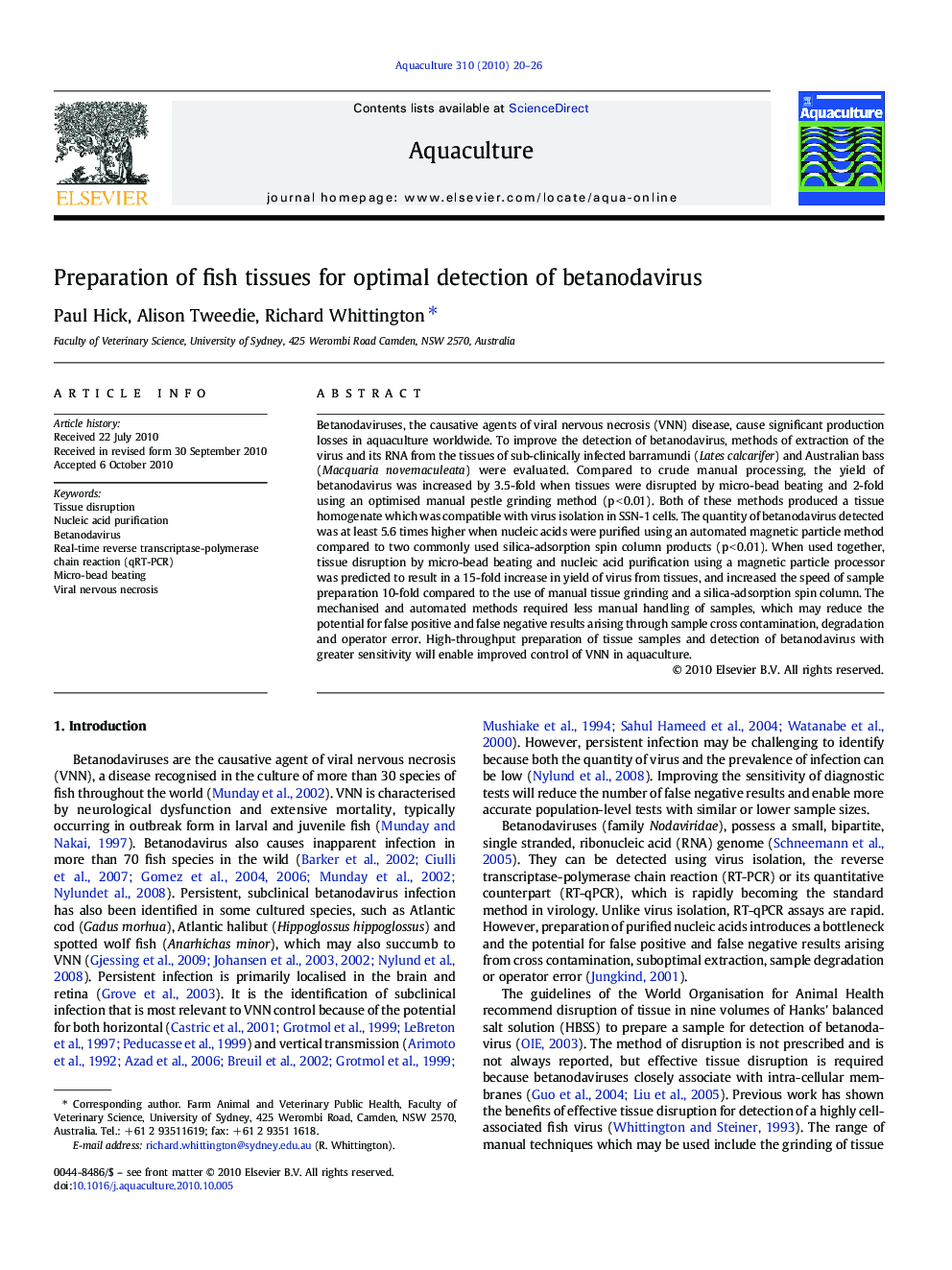| Article ID | Journal | Published Year | Pages | File Type |
|---|---|---|---|---|
| 2423409 | Aquaculture | 2010 | 7 Pages |
Betanodaviruses, the causative agents of viral nervous necrosis (VNN) disease, cause significant production losses in aquaculture worldwide. To improve the detection of betanodavirus, methods of extraction of the virus and its RNA from the tissues of sub-clinically infected barramundi (Lates calcarifer) and Australian bass (Macquaria novemaculeata) were evaluated. Compared to crude manual processing, the yield of betanodavirus was increased by 3.5-fold when tissues were disrupted by micro-bead beating and 2-fold using an optimised manual pestle grinding method (p < 0.01). Both of these methods produced a tissue homogenate which was compatible with virus isolation in SSN-1 cells. The quantity of betanodavirus detected was at least 5.6 times higher when nucleic acids were purified using an automated magnetic particle method compared to two commonly used silica-adsorption spin column products (p < 0.01). When used together, tissue disruption by micro-bead beating and nucleic acid purification using a magnetic particle processor was predicted to result in a 15-fold increase in yield of virus from tissues, and increased the speed of sample preparation 10-fold compared to the use of manual tissue grinding and a silica-adsorption spin column. The mechanised and automated methods required less manual handling of samples, which may reduce the potential for false positive and false negative results arising through sample cross contamination, degradation and operator error. High-throughput preparation of tissue samples and detection of betanodavirus with greater sensitivity will enable improved control of VNN in aquaculture.
